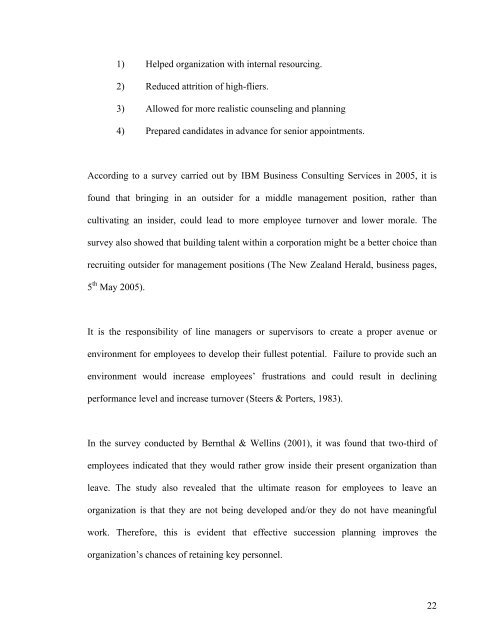CHAPTER 1: INTRODUCTION 1.0 Chapter Overview - DSpace@UM
CHAPTER 1: INTRODUCTION 1.0 Chapter Overview - DSpace@UM
CHAPTER 1: INTRODUCTION 1.0 Chapter Overview - DSpace@UM
Create successful ePaper yourself
Turn your PDF publications into a flip-book with our unique Google optimized e-Paper software.
1) Helped organization with internal resourcing.2) Reduced attrition of high-fliers.3) Allowed for more realistic counseling and planning4) Prepared candidates in advance for senior appointments.According to a survey carried out by IBM Business Consulting Services in 2005, it isfound that bringing in an outsider for a middle management position, rather thancultivating an insider, could lead to more employee turnover and lower morale. Thesurvey also showed that building talent within a corporation might be a better choice thanrecruiting outsider for management positions (The New Zealand Herald, business pages,5 th May 2005).It is the responsibility of line managers or supervisors to create a proper avenue orenvironment for employees to develop their fullest potential. Failure to provide such anenvironment would increase employees’ frustrations and could result in decliningperformance level and increase turnover (Steers & Porters, 1983).In the survey conducted by Bernthal & Wellins (2001), it was found that two-third ofemployees indicated that they would rather grow inside their present organization thanleave. The study also revealed that the ultimate reason for employees to leave anorganization is that they are not being developed and/or they do not have meaningfulwork. Therefore, this is evident that effective succession planning improves theorganization’s chances of retaining key personnel.22
















